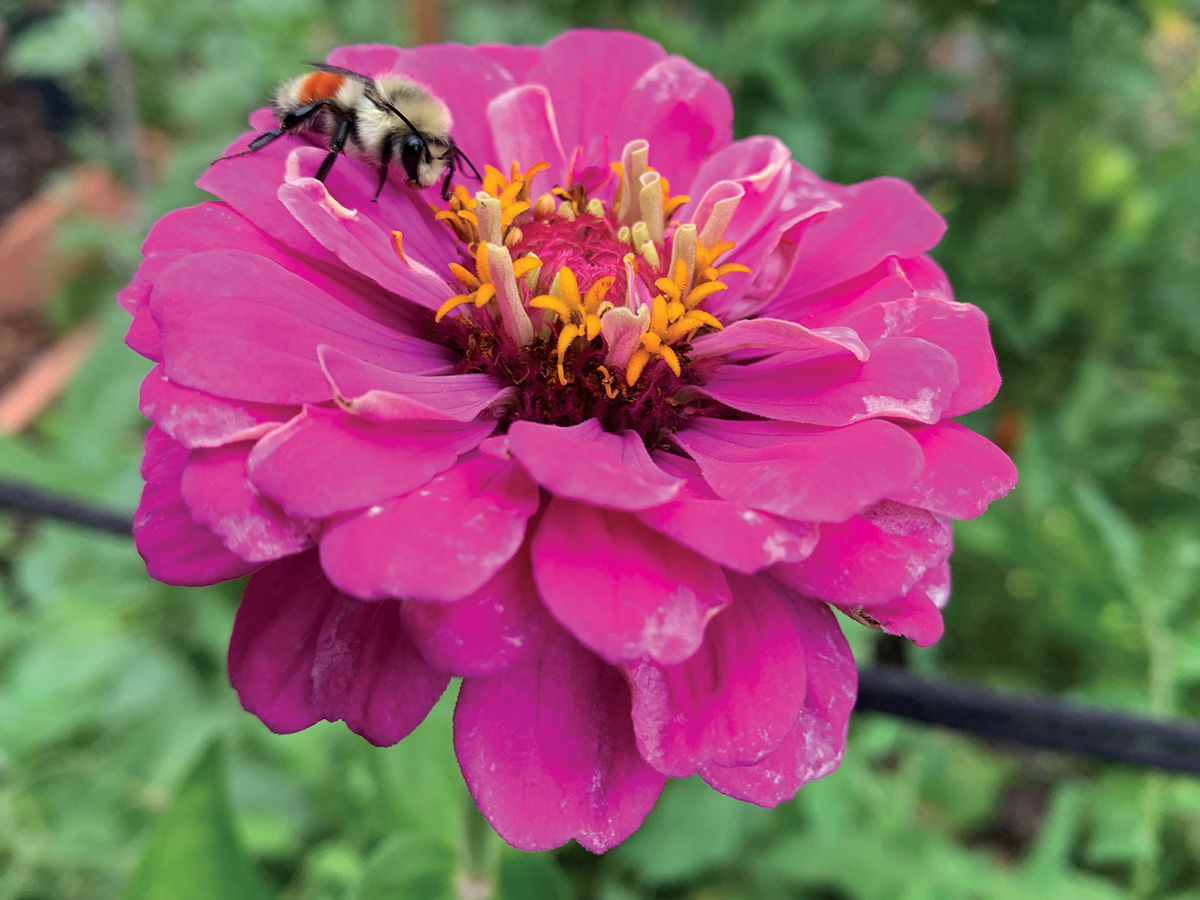The beauty of annuals

Photo by Deborah Maier
Even though frost is still in the ground and snowfall anticipated, April brings visions of summer colour. In about eight weeks, Calgary gardeners can count on it being the start of the frost-free period and expect soil temperatures to be warm enough to support warm season crops. At that time, many gardeners will be planting warm-season annual flowers to green-up and add a splash of colour to containers and flower beds. Instead of waiting until May to purchase plant starts, why not start some annuals yourself? Even choosing to plant a package of seeds can save a gardener money—and it’s fun!
The beauty of annuals is their purpose is to flower and produce seeds. That means if they are watered, fed, given the right light conditions, and deadheaded if they are not a self-cleaning variety, they will bloom all season long. The light through a sunny window in late April and May will support their seedlings for the four to six weeks they are being grown indoors, so there is no need for grow lights.
Plants need to reach maturity before they can flower. By starting seeds indoors, you can expect to see blooms on those plants earlier than on the ones that were direct seeded later. Most annual seed packages will recommend the number of weeks before planting outside as the seed starting period. Choose the date you want to plant outside, usually during the last week of May or the first week of June, then count back the number of weeks. Resist the urge to sow the seeds earlier, you just want a bit of a head start. Growing seedlings too long indoors, even in a sunny window, can cause them to become spindly. Spindly plants have long weak stems which can make their transition to growing outside difficult. Don’t worry if your plants are smaller than the plants at a garden centre (those plants have had the benefit of being grown in a greenhouse), your plants will do fine and fill in quickly once moved outside.
I like to sow my seeds in repurposed fruit containers (the ones used to sell strawberries or plums at the grocery store). When using this style of container for small seeds, expect to have to separate and pot up the seedlings once before planting them outside. For plants that don’t like to be transplanted, I’ve purchased deep, folding, seed starters called a root trainer. This container provides room for the roots to grow down. The container unfolds, making it easy to remove the seedling when it’s time to plant them outside. Last year, I started Zinnia’s in these containers.
Most years, I start annuals indoors. For as long as I can remember, my garden has had at least a few marigolds—usually started from seeds. They are an easy plant to grow and are rewarding with their cheery orange, gold, and burgundy blooms. For many years, I have also been growing white alyssum. It has an airy texture, sweet scent, and blooms late into the fall, providing food and shelter for native pollinators. White alyssum is also easy to start from seeds. However, Zinnias are the inspiration for this story. I grew them for the first time last year. Many Society gardeners recommended them for summer colour, so I thought I would try them. I started the seeds in the root trainers at the beginning of May. It was later than planned, but then I didn’t get them planted outside until June 19. They bloomed from July 1 until the end of September. The flowers were eye-catching and long-lasting. In warm weather, the bees were active on the flowers. In cool weather, the bees rested on them. The deer left them alone. I can’t wait to plant more! Why don’t you start some annuals this spring, too?
To learn more about gardening in the Calgary area, visit our website calhort.org.
